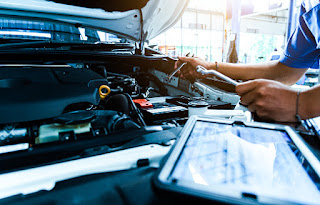The Evolution of Tyres in the UK: From Horse-Drawn Carriages to Electric Cars
Tyres are an essential component of modern transportation. They have evolved over time to meet the needs of changing modes of transport, from horse-drawn carriages to electric cars. In this article, we will explore the evolution to buy tyres Shirley in the UK and how they have transformed over time.
A RIDE-THROUGH EVOLUTION OF TYRES
Let us see the Tyre development:
Horse-Drawn Carriages:
Before the invention of the automobile, transportation in the UK relied heavily on horse-drawn carriages. The first tyres for carriages were of solid rubber, which was durable but provided a rough ride. In the late 1800s, the first pneumatic tyre got developed, which used compressed air to provide a smoother ride.
Early Automobiles:
The first automobiles got developed in the late 1800s, and they used bicycle-style tyres made of solid rubber. These tyres were prone to punctures and provided a rough ride. In 1904, the first detachable rim got developed, which made it easier to change tyres.
The First World War:
During the First World War, the demand for tyres increased dramatically as the military used vehicles for transportation. To meet the demand, the UK tyre industry developed new technologies. Including cord and fabric reinforcements to increase durability.
The 1920s and 1930s:
In the 1920s and 1930s, the UK tyre industry continued to innovate. The first radial tyre got developed, which used cords that ran at a 90-degree angle to the direction of travel. This provided better handling and improved fuel efficiency.
The Second World War:
During the Second World War, the UK tyre industry was again called upon to meet the demand for tyres. The military used vehicles extensively, and the tyre industry developed new technologies to meet the demand. Synthetic rubber got developed as a replacement for natural rubber, which was in short supply.
The Post-War Years:
In the post-war years, the UK tyre industry continued to innovate. The first tubeless tyre got developed, which eliminated the need for an inner tube. This provided better handling and improved safety. In the 1960s, the first steel-belted radial tyre got developed. Which provided even better handling and improved durability.
Modern Tyres:
Today, tyres continue to evolve to meet the needs of changing modes of transport. Electric cars require tyres that provide low rolling resistance to maximize range. While off-road vehicles require tyres that provide better traction in rough terrain. The use of sustainable materials is also becoming increasingly important in the development of modern tyres.
THE TYRE PRESSURE MONITORING SYSTEMS (TPMS)
Tyre pressure monitoring systems (TPMS) are becoming increasingly popular in the UK and around the world. These systems can provide a number of benefits to drivers, but there are also some limitations to consider.
Benefits of TPMS
- Improved safety: One of the most significant benefits of TPMS gets improved safety. When your tyres are under-inflated, they are more likely to suffer from blowouts or other types of tyre failure. TPMS helps to alert you when your tyres are under-inflated, giving you the opportunity to take action before a failure occurs.
- Increased fuel efficiency: Properly inflated tyres can also help to improve fuel efficiency. When your tyres are under-inflated, your car has to work harder to move, which can cause your fuel consumption to increase. TPMS can help you maintain the correct tyre pressure, which can save you money on fuel.
- Longer tyre life: When your tyres are under-inflated, they are more likely to wear unevenly, which can lead to premature wear and tear. By using TPMS to maintain the correct tyre pressure, you can extend the life of your tyres and save money on replacement costs.
- Better handling: Properly inflated tyres can also help to improve your car's handling. When your tyres are under-inflated, your car may not respond as well to your steering and braking inputs. This can make your car feel less stable and less safe to drive.
Limitations of TPMS
- Cost: One of the biggest limitations of TPMS is the cost. While some cars come with TPMS as standard, others require an aftermarket installation. This can be expensive, especially for older cars.
- Maintenance: TPMS requires regular maintenance to ensure that it is working properly. This can include replacing batteries, sensors, and other components. This can be time-consuming and expensive, especially if you have multiple cars.
- False alarms: TPMS can sometimes give false alarms, which can be frustrating for drivers. This can get caused by a number of factors, including changes in temperature or changes in altitude.
- Limited accuracy: TPMS is not always accurate. It can get affected by factors such as temperature and altitude, which can cause it to give incorrect readings. This can be a problem if you rely solely on TPMS to monitor your tyre pressure.
Conclusion
The evolution of Bridgestone tyres Shirley in the UK has been a fascinating journey. From the rough solid rubber tyres of horse-drawn carriages to the high-tech, sustainable tyres of today. The UK tyre industry has constantly innovated to meet the needs of changing modes of transport. As we continue to move towards a more sustainable future, the development of eco-friendly tyres will become increasingly important.

Comments
Post a Comment